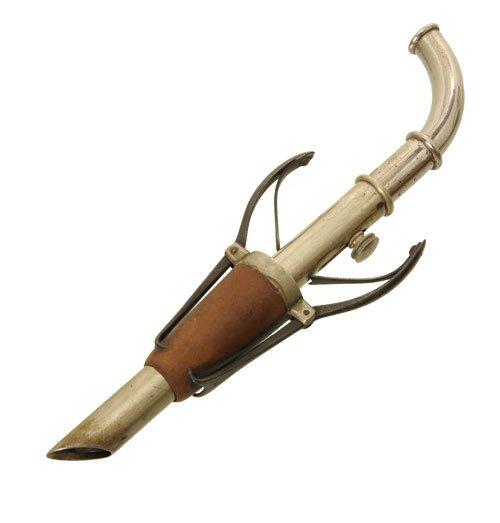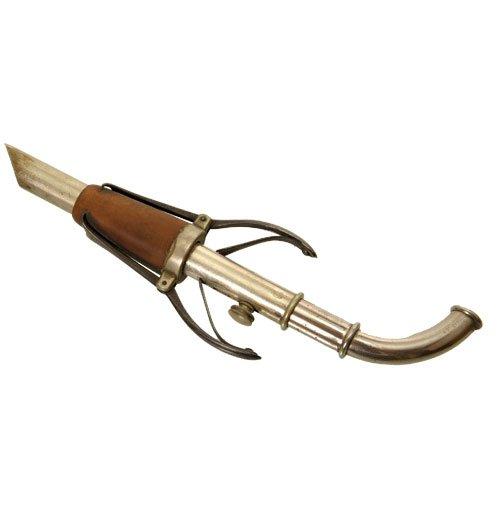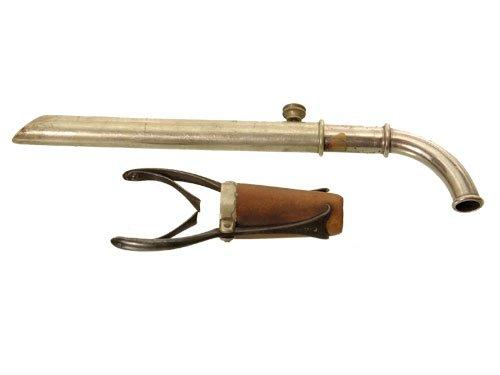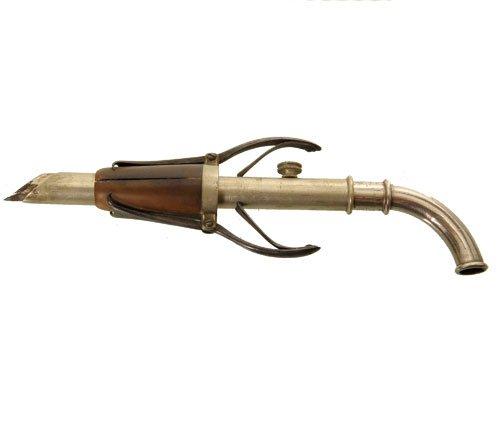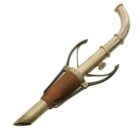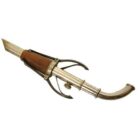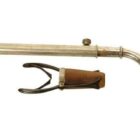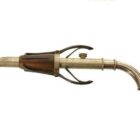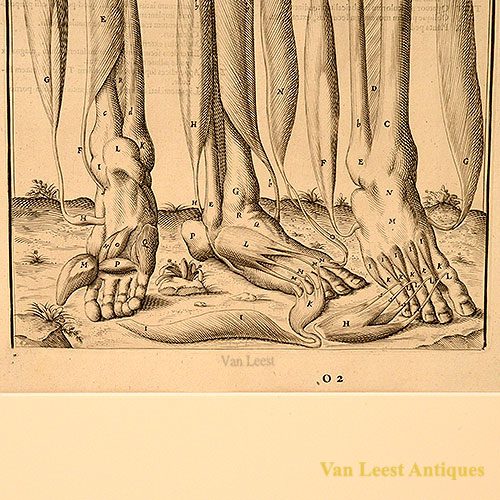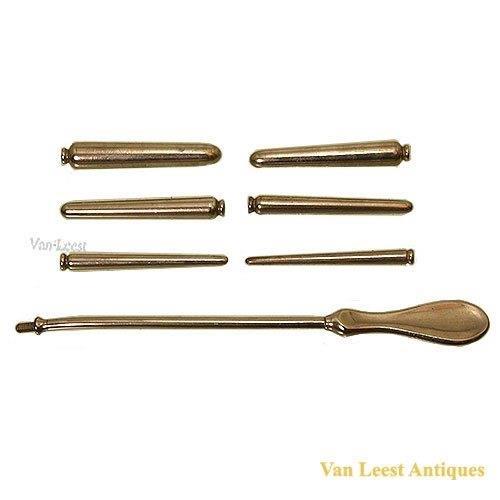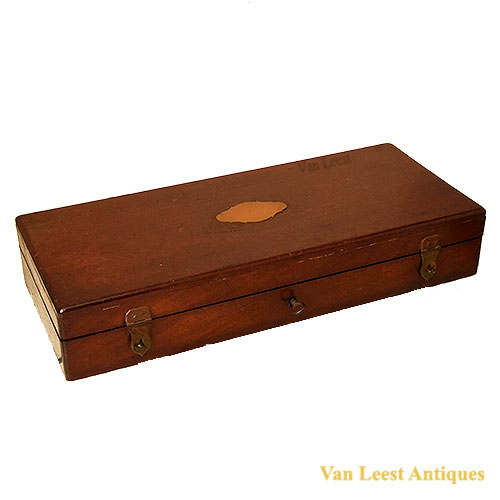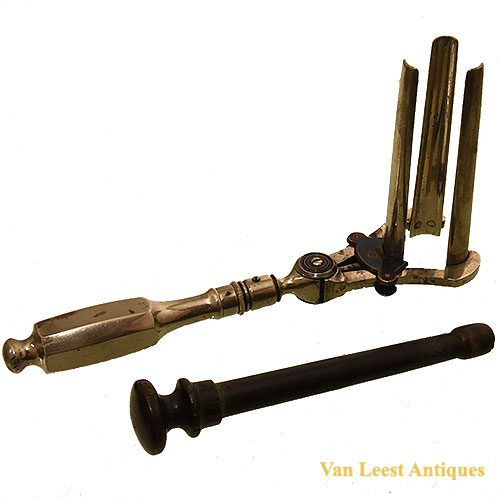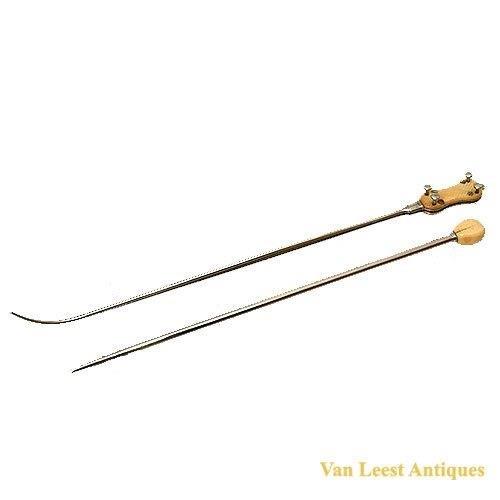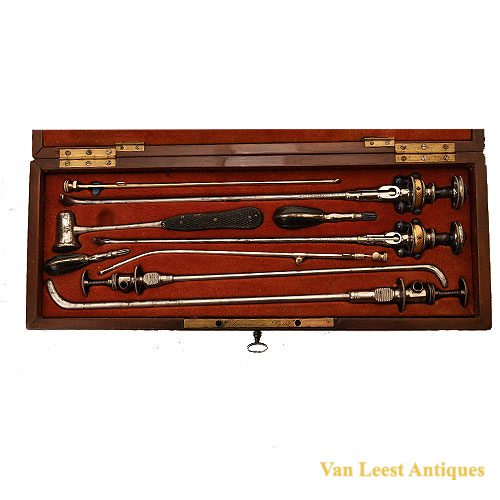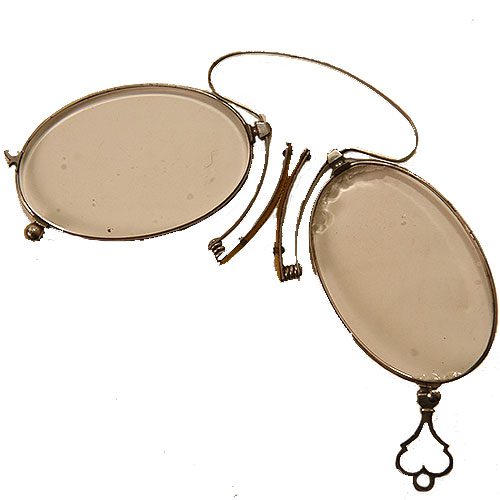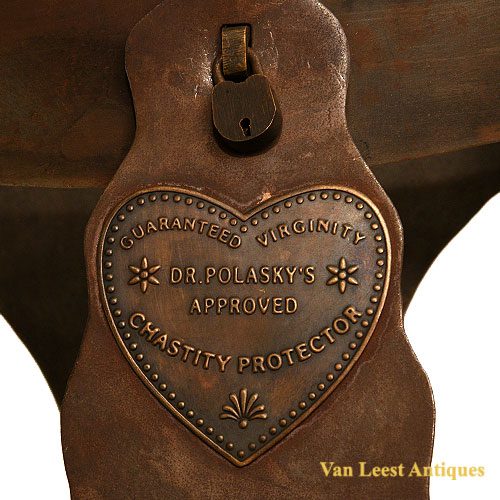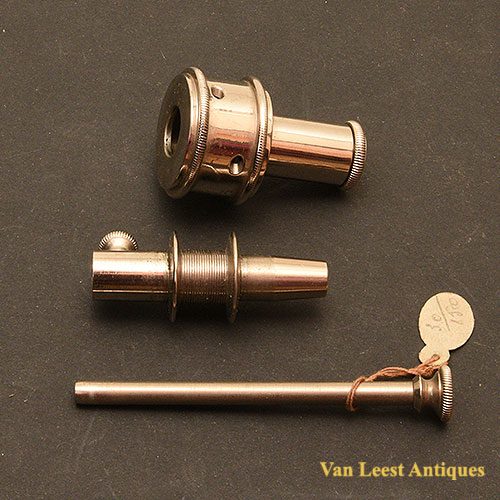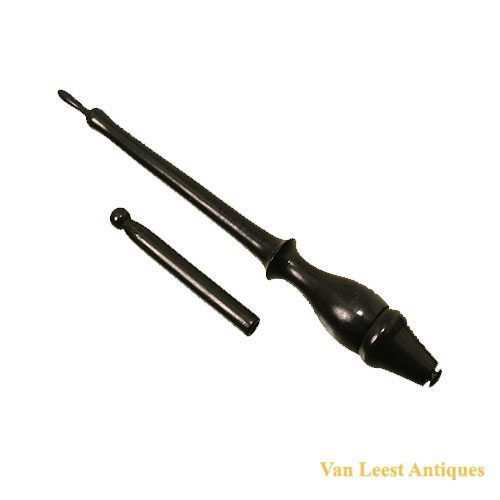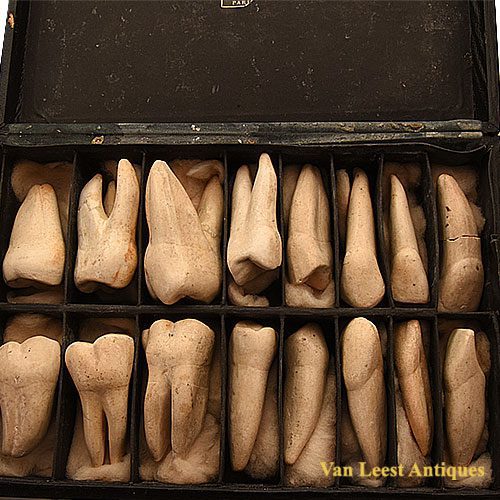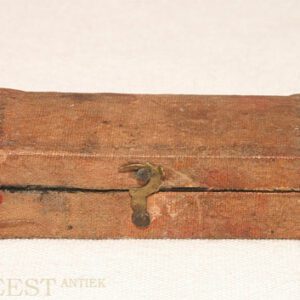Tiemann Ovarian trocar by Spencer Wells
On application
An ovarian cyst trocar by Tiemann developed by Sir thomas spencer wells (1818-1897). Spencer Wells was perhaps the largest of the pioneer ovariotomists, perform the procedure for the first time in 1858, and is credited for the design of many instruments for the operation.
A trocar is a sharp, pointed instrument designed to puncture a body part for fluid drainage. This particular ovarian cyst trocar and clamp was used to drain ovarian cysts, a procedure known as “tapping.” Ovarian cysts are fluid-filled sacs enclosed by a thin membrane within the ovary. While many cysts are harmless, some can grow large enough to cause significant discomfort, potentially requiring surgical intervention. The surgical removal of an ovary or ovarian tumor is called an ovariectomy. The first recorded successful ovariectomy was performed by Robert Houston in Glasgow in 1701, with the patient surviving the procedure. However, before the development of anesthesia and antisepsis in the mid-19th century, treatment options for women with ovarian cysts were extremely limited.
can be employed to empty a cyst of its fluid contents, and thus reduce its size so that it may be withdrawn through an abdominal incision.
Lenght: 21 cm.
